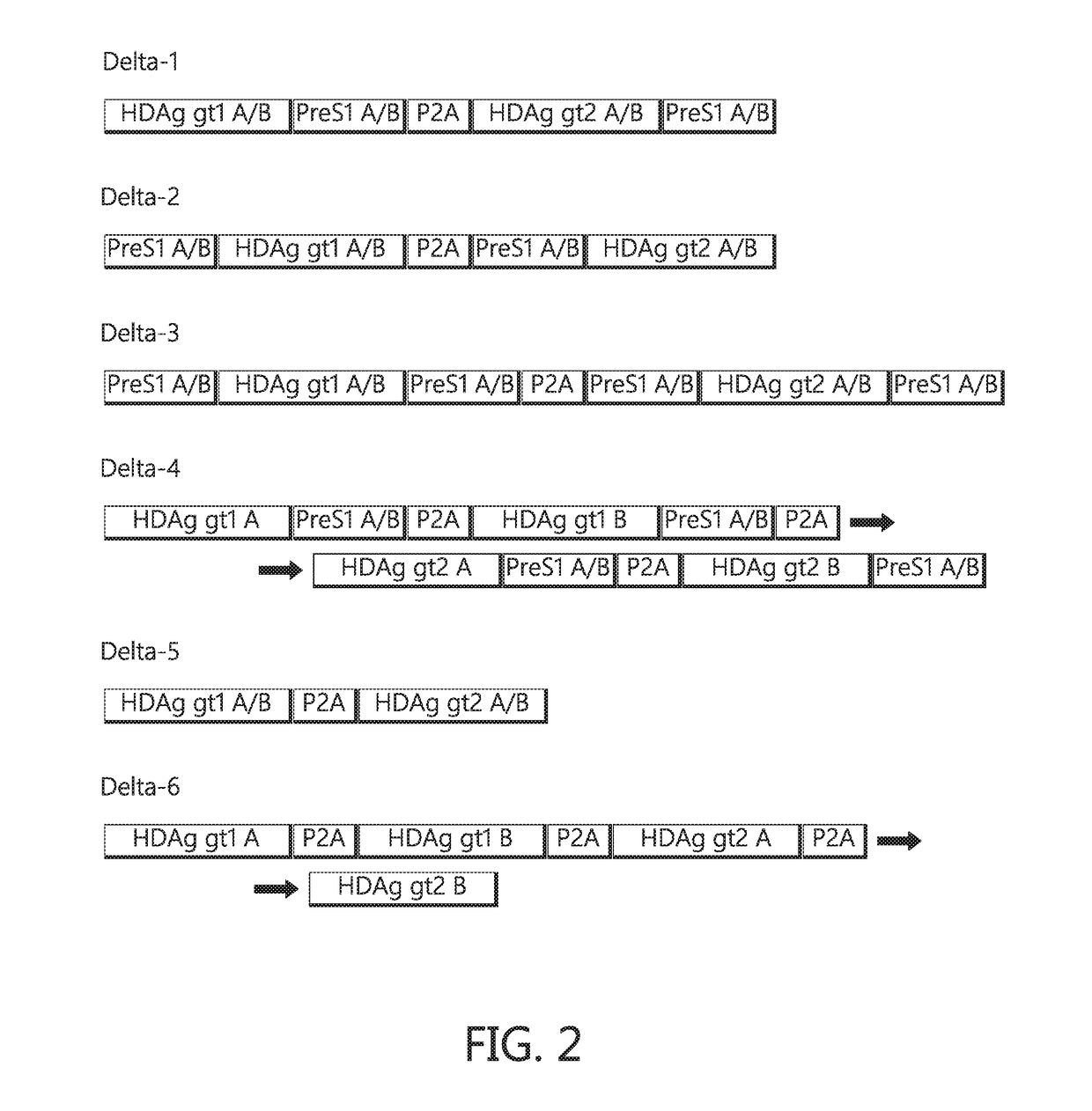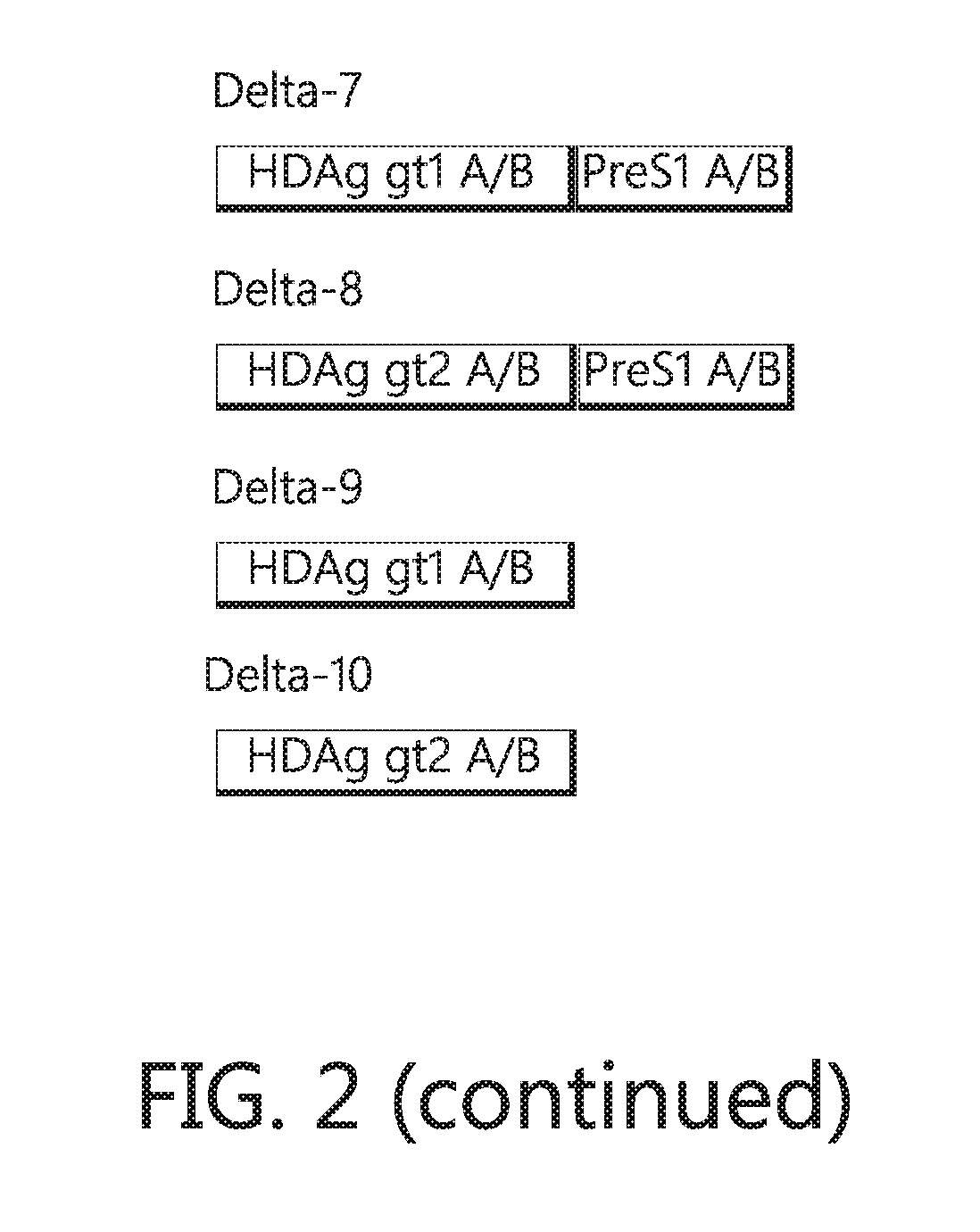Chimeric hepatitis d virus antigen and hepatitis b virus pre s1 genes for use alone or in vaccines contaning hepatitis b virus genes
a technology of hepatitis b virus and antigen, applied in the field of chimeric genes, can solve the problems of liver cancer, liver failure, liver damage, etc., and achieve the effects of improving immunological response, promoting adjuvant activity, and improving immunological respons
- Summary
- Abstract
- Description
- Claims
- Application Information
AI Technical Summary
Benefits of technology
Problems solved by technology
Method used
Image
Examples
Embodiment Construction
[0045]Existing therapies with reversed transcriptase (RT) inhibitors effectively supress HBV replication but fails to induce off-therapy responses, and have no effect on HDV replication. The viroid-like virus HDV is a highly pathogenic virus and can only complete its replication cycle in cells infected by HBV. HDV lacks its own gene for a viral envelope protein and therefore “steals” the envelope of HBV, the hepatitis B surface antigen (HBsAg), when leaving the cell. Hence, the HBV vaccine can protect naive individuals from both HBV and HDV, but cannot protect a person infected by HBV against HDV superinfection due to the inherent overproduction of HBsAg during the HBV infection.
[0046]In some alternatives described herein, preS1 antibodies were shown to prevent HBV and HDV infection. Importantly, both HBV and HDV require the same preS1 sequence to enter hepatocytes. Thus, targeting preS1 is an excellent way to prevent both infections. It has been shown that a 48 amino acid stretch w...
PUM
| Property | Measurement | Unit |
|---|---|---|
| Current | aaaaa | aaaaa |
| Current | aaaaa | aaaaa |
| Digital information | aaaaa | aaaaa |
Abstract
Description
Claims
Application Information
 Login to View More
Login to View More - R&D
- Intellectual Property
- Life Sciences
- Materials
- Tech Scout
- Unparalleled Data Quality
- Higher Quality Content
- 60% Fewer Hallucinations
Browse by: Latest US Patents, China's latest patents, Technical Efficacy Thesaurus, Application Domain, Technology Topic, Popular Technical Reports.
© 2025 PatSnap. All rights reserved.Legal|Privacy policy|Modern Slavery Act Transparency Statement|Sitemap|About US| Contact US: help@patsnap.com



